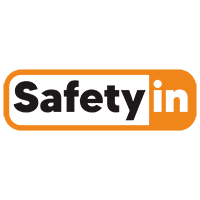When it comes to keeping construction workers safe, few items are more important than reflective vests. Choosing the right vest isn't just about checking a box — it's about making sure your crew stays visible, comfortable, and compliant with safety standards. Here's what you need to know when buying reflective vests for your team.
1. Understand the Safety Standards
The first thing to check is whether the vests meet ANSI/ISEA 107 standards (in the U.S.). These standards classify vests by:
Type O (Off-Road): For workers not exposed to traffic.
Type R (Roadway): For workers exposed to traffic (construction, flaggers, utility workers).
Type P (Public Safety): For police, firefighters, and EMS.
Each type is further divided into Classes 1, 2, or 3, based on how much reflective material is used and the amount of background fabric.
Class 1: Low-risk areas (parking attendants).
Class 2: Moderate-risk areas (roadside construction at low speeds).
Class 3: High-risk areas (high-speed roadways, low-visibility conditions).
✅ Tip: For most construction sites, Type R, Class 2 or 3 vests are recommended.
2. Choose the Right Color
The color of the vest is critical for visibility.
Hi-Vis Yellow-Green: Best for bright, sunny environments.
Hi-Vis Orange-Red: Best for construction zones or areas with lots of green surroundings (so workers stand out more).
Make sure the color contrasts well with the environment where workers will be operating.
3. Focus on Fit and Comfort
Workers wear their vests for long hours, so comfort matters.
Size: Vests should fit over regular clothing or cold-weather gear.
Adjustability: Look for vests with adjustable sides or straps.
Breathability: Mesh fabric is great for hot weather.
Weight: Lightweight vests reduce fatigue.
✅ Tip: Buy a few sample vests in different sizes and styles to test before placing a large order.
4. Think About Features
Modern reflective vests come with helpful features like:
Pockets: For tools, phones, and notepads.
ID Holders: For easy identification.
Radio Tabs: For attaching walkie-talkies.
Breakaway Designs: Allow the vest to tear away if it gets caught on equipment.
Water Resistance: Useful for rainy environments.
Pick the features that make the most sense for your specific job site.
5. Customize for Your Crew
Adding your company’s logo, employee names, or job titles not only makes your team look professional but can also help with site security and branding.
Make sure any customization doesn’t cover the reflective material.
✅ Tip: Choose printing methods (like heat transfer) that won't damage the visibility striping.

